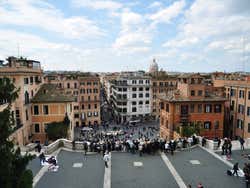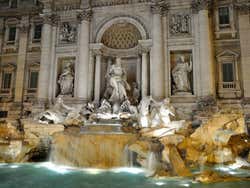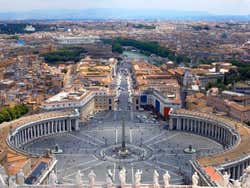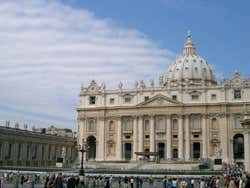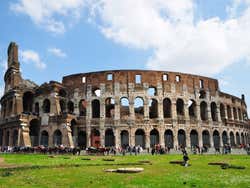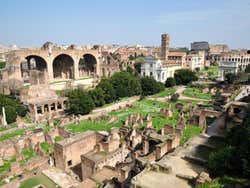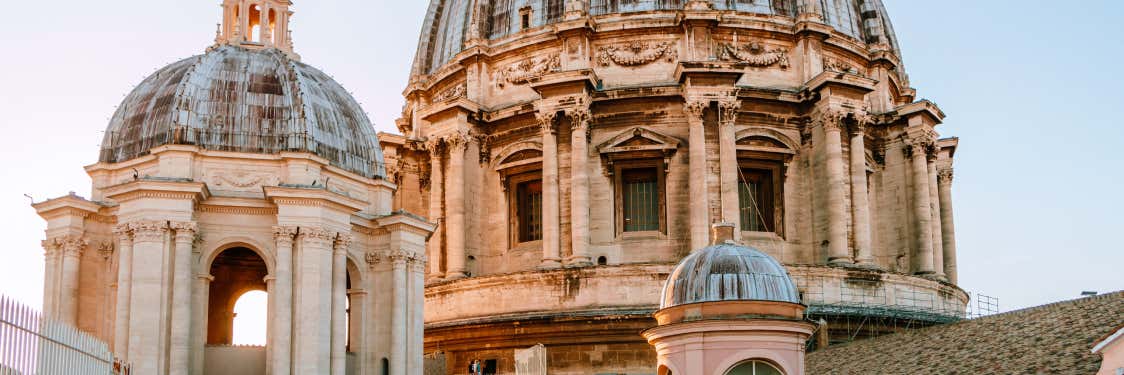
What to See in Rome in 3 Days
Although the city is ideally seen in 4 or more days, sometimes visitors have only a weekend to see Rome. To make the most of your visit, check out our top tips for what to see in Rome in 3 days, including stops at the Vatican City!
Arrival: Squares and Fountains
By the time you’ve landed, found your hotel, and dropped your luggage off, there will probably not be enough time to visit any monuments. What should you do? The best plan is to take a walk through the city center and get to know its streets, squares (piazzas), and fountains.
If you want to arrive at your hotel without any complications and as quickly as possible, we recommend checking out our transfer service from the airport in Rome to your hotel.
If you'd prefer to save on this journey to the hotel, you can also get a bus for a good price:
Buy tickets for the shuttle bus from Ciampino Airport to Rome.
If your accommodation is in the outskirts, the best way to get to Piazza di Spagna is to get the metro (line A). If you’re staying in the city center, it might be a better idea to go on foot.
Once in Piazza di Spagna, take the Via dei Condotti, one of the city’s most important high streets, until you get to the Via del Corso. Here, turn left. Walk down the street and cross the Piazza Colonna (where the Column of Marcus Aurelius is located). Two streets further down, turn to the left and take the Via delle Muratte.
Walk a few meters until you are hit by a breathtaking sight: the Trevi Fountain. This is a great place to stop and enjoy the beauty of such a monument. If you are superstitious, you might want to throw a coin into the fountain.
Walking back down Via delle Muratte, cross Via del Corso, and continue along Via di Pietra. Five minutes later, you’ll arrive at the Pantheon, the best-preserved monument from the Roman Empire. If you’d like to enjoy the views, you can order a cappuccino in one of the many terraces of the piazza.
Leave the Pantheon via Salita de Crescenzi Street and follow the signs until you get to Piazza Navona. This impressive square houses the Fontana dei Quattro Fiumi, the Fontana del Moro, and the Fountain of Neptune, as well as the Obelisk of Domitian.
Exit the square from the south side (by the Fontana del Moro) and you’ll arrive at Corso Vittorio Emanuele II, a wider street. If you head down this street, on the left side, you’ll come across the Area Sacra dell’Argentina, an excavation where you’ll be able to see the remains of Roman architecture from the Roman Republic. This area is especially beautiful when lit up.
Continuing in the same direction you'll see the Monument to Victor Emmanuel II, a huge building built in honor of the first king of Italy. If you have time to spare, you can go and see the Piazza del Campidoglio.
Choose a restaurant nearby and if you’re not too tired you can go and have a drink at Campo dei Fiori, one of Rome’s liveliest squares.
If you'd like to explore with a guide on your first day in Rome, we recommend booking this night tour of Rome.
Day 2: The Vatican City
If you’re visiting Rome during the weekend, you should dedicate the first day, Saturday, to explore the Vatican City and its museums, since on Sundays the Vatican Museums are closed (apart from the last Sunday of each month).
If you're only in Rome for 2 or 3 days, you should probably expect to wake up early. To make the most of your time in Rome, you should make it to the Vatican City no later than 9 am.
The best way to get to the Città Vaticano is to take the metro to Ottaviano. Upon leaving the station, take the street with the same name until you arrive at St. Peter's Square.
After having taken in the splendid views of St Peter’s Square, join the queue to enter St Peter’s Basilica, one of the holiest temples for Christendom.
Inside the Basilica, it's definitely worth climbing to the top of the dome (446 ft - 136 m tall) to get a bird’s eye view of Rome and the Vatican City. The ascent is a little exhausting (especially if you choose the stairs), but it's also part of its appeal.
When you come down from the dome you'll have to leave St. Peter's Square and follow the signs to get to the Vatican Museums. If you are lucky there won't be a long queue and you'll be able to enter more or less directly. If you like museums you can stay for hours or days, but remember at the end of the museum is Michelangelo's masterpiece: The Sistine Chapel.
If you want to visit the Vatican Museums and the Sistine Chapel without the long queues, we recommend this Vatican City guided tour.
If you also want to enjoy the impressive St Peter's Basilica, you can opt for this more complete option: Tour with access to the Sistine Chapel, the Vatican Museums and St Peter's Basilica.
On finishing your visit to the Vatican, take Via della Conciliazione from St. Peter's Square. On this street is located the Castel Sant'Angelo (Castle of the Holy Angel) and the bridge, Ponte Sant’Angelo, a Roman bridge that is considered one of the most beautiful ones in Rome. The castle is now a museum, definitely worth exploring.
We also recommend checking out this Castel Sant'Angelo tour (with Terrace Access included).
Cross the bridge and follow the signs to Piazza Navona and the Pantheon, which you can visit.
If there are still some hours of daylight and you wish to relax a bit, head to Villa Borghese, one of Rome’s most romantic public parks. Here you can lie on the grass or go for a stroll and discover its lake and numerous buildings. If you’re traveling with children, they will love this green space.
At night there is nothing better than to wander through the city streets taking in Rome’s lively atmosphere and extraordinary architecture. If you didn’t have time to visit Campo dei Fiori the previous day, why not go today and have a relaxing drink?
Day 3: Imperial Rome
If you enjoy history you'll have left the best for the last day, since today we shall visit the Roman Forum, the Palatine Hill, and the Colosseum.
As soon as you leave the station you'll have before you the great wonder of ancient Rome: the Colosseum. If you find a long queue at the Colosseum (more than 15 minutes) you can visit the Roman Forum and Palatine Hill first. The entrance fee is shared and you can then return to the Colosseum without waiting in line.
To enjoy this experience to the max without long queues, we recommend booking the most popular guided tour in Rome: Guided tour of the Colosseum, Roman Forum and Palatine Hill.
After finishing these visits you can access Capitoline Hill from the north side of the forum. When you get to Piazza del Campidoglio don't miss the statue of Romulus and Remus, located just before entering the square and often missed due to its location.
Take the “Cordonata” stairs that lead to Via del Teatro Marcello and stay on the left side of the street. In less than 10 minutes you'll get to Santa María in Cosmedin, where the Mouth of Truth is found.
Once you’ve visited the church, cross the river Tiber and you’ll find yourself in Trastevere, one of Rome’s most charming neighborhoods. The atmosphere is very lively and the restaurants are good quality and have very affordable prices. You can finish by having an ice cream in Santa Maria in Trastevere Square.
If your flight doesn’t leave until late, we recommend going to the ruins of the Circus Maximus or the Baths of Caracalla.
If you want to enjoy the city to the fullest but prefer not to do it on foot, the Rome tourist bus is the ideal option to visit the main places of interest in complete comfort.
Staying in Rome for more than 3 days?
If you’ve already done our 3-day Rome itinerary and you've got more time, why not check out our list of the most important museums or catacombs? Rome is such an impressive and unique city that visitors will be organizing their next trip to the city before it has even ended.
One of the most popular options for devout followers of the Pope is to book an audience with Pope Leo XIV.
Some of the best tours from Rome are:
